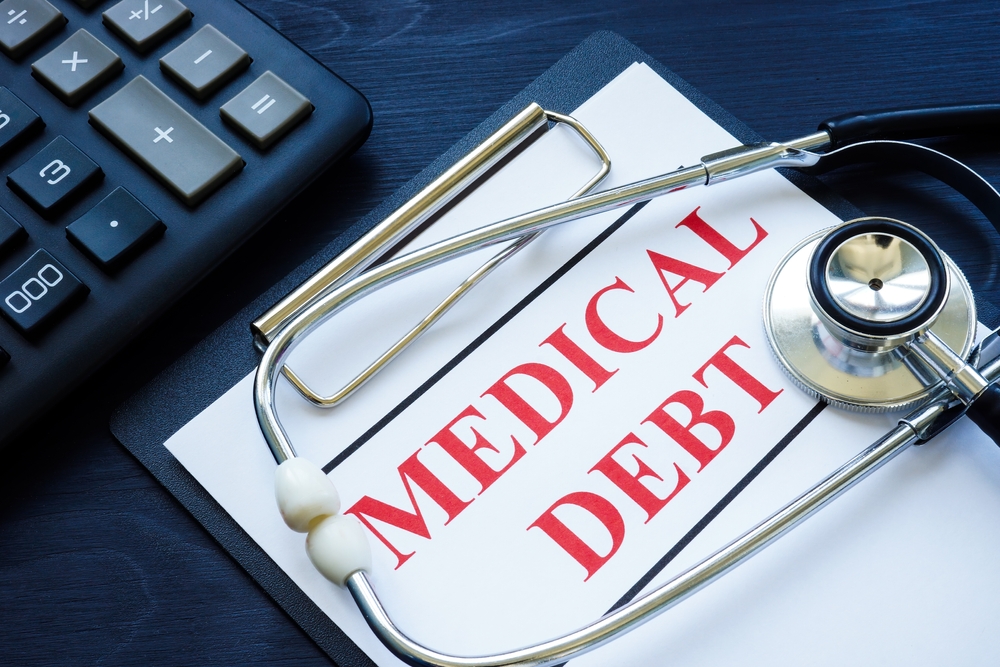





Attorney at Debt Advisors Law Offices
Practice Areas: Chapter 7 Bankruptcy, Chapter 13 Bankruptcy, Stop Foreclosure

Across the United States, medical bills are no longer just about healthcare—they’ve become a major source of financial crisis. Families who believed they were protected by insurance often discover that deductibles, uncovered services, and surprise charges leave them with debts they cannot manage.
For many, these bills grow faster than they can keep up with, creating a financial burden that feels impossible to escape. Understanding why medical debt so often leads to bankruptcy is key to making informed choices before the situation spirals out of control.
Over the past decade, the role of medical bills in bankruptcy filings has steadily increased. Nonprofit credit counseling agencies now report that nearly one in five people seeking bankruptcy counseling cite medical debt as the main cause. Just a few years ago, this figure was closer to one in ten.
“Approximately 20% of people seeking credit counseling before bankruptcy now cite medical debt as the primary cause, up from 13% just two years earlier.” – CredAbility
This trend reflects a healthcare system where costs rise faster than wages. Deductibles, premiums, and prescription prices continue to increase, while insurance often fails to cover the full cost of treatment. The result is mounting medical debt across a wide range of households.
For more statistics, visit Centers for Medicare & Medicaid Services or the U.S. Census Bureau.
Medical bills can quickly overwhelm families for several reasons. Job loss often strips workers of both income and health coverage, leaving them vulnerable to sudden illness or injury. Even employed individuals face higher insurance premiums and deductibles that lead to significant out-of-pocket costs.
Hospitals and clinics are also faster to send unpaid bills to collections, where interest and fees add up. Many patients turn to credit cards to cover expenses, which creates a cycle of high-interest debt. These combined pressures mean that even middle-income households can reach a breaking point.
Beyond the financial strain, there is an emotional toll. Families juggling bills, collection calls, and uncertainty about future care face constant stress. This combination of economic and psychological pressure explains why medical debt is such a powerful factor in bankruptcy filings.
Filing for bankruptcy should be viewed as a last resort. Before reaching that step, patients may have alternatives to ease their financial burden.
Many hospitals operate financial assistance or charity care programs. Patients who qualify may see part of their bills reduced or forgiven. Others may be able to set up payment plans that spread costs out over time.
Nonprofit credit counseling agencies also help households create structured repayment strategies. These services can prevent debt from reaching the point of collection.
Negotiating directly with healthcare providers is another option, as billing departments sometimes reduce charges when patients can commit to regular payments.
For those already overwhelmed, speaking with a Milwaukee bankruptcy attorney can provide clarity about whether bankruptcy is the right step or if other solutions might work. Having guidance early often makes the process less stressful and more informed.
When other strategies fail, bankruptcy may provide relief from medical debt. In most cases, medical bills are treated like unsecured debt and can be discharged through Chapter 7 or managed through a repayment plan under Chapter 13.
“Debt Advisors Law Offices is a debt relief agency. We help people file for bankruptcy under the Bankruptcy Code.”
It is important to remember that bankruptcy has long-term financial consequences, including an impact on credit. Still, for families with overwhelming bills, it can offer a genuine chance at a fresh start. Each case is unique, and outcomes depend on individual circumstances.
| Year | % of Bankruptcies Attributed to Medical Debt |
Key Economic Context |
| 2005 | ~8% | Pre-recession credit bubble |
| 2010 | ~13% | Post-recession job losses, rising premiums |
| 2025 | ~20% | Inflation, higher deductibles, insurance gaps |
Medical debt is among the top reasons for bankruptcy, but it combines with housing, job loss, and credit card debt to create financial hardship.
Yes. High deductibles, copays, and uncovered services can still leave insured families with overwhelming debt.
Yes. Medical bills are typically treated as unsecured debt and can be discharged, depending on the type of bankruptcy filed.
Yes. Hospital charity care, payment plans, and nonprofit credit counseling can help patients reduce or manage debt without bankruptcy.
Most medical debt can be discharged, though every case is different. Some financial obligations may remain after filing.
Bankruptcy lowers credit scores but can also provide a chance to rebuild financial stability over time.
The rise in bankruptcies tied to medical debt highlights a larger problem: healthcare costs continue to outpace what families can afford. With hospitals sending bills to collections and insurance gaps growing, more Americans find themselves facing financial collapse after illness or injury.
Patients do have options, from negotiating bills to exploring nonprofit counseling, but for many, bankruptcy becomes the final path forward. While it carries long-term consequences, it also offers relief and the possibility of rebuilding.
If medical debt is weighing you down and you’re unsure of your options, speaking with an experienced attorney can make a difference. Debt Advisors Law Offices offers free consultations to help you understand your rights and explore the best path forward.

Learn about bankruptcy protections, types of bankruptcy, how to get started, what to expect, and who to trust. Filing bankruptcy is the ONLY way to completely eliminate debt. If bankruptcy is right for you, it offers powerful protections that cannot be achieved through alternative solutions such as hardship relief, loans, or debt settlement.